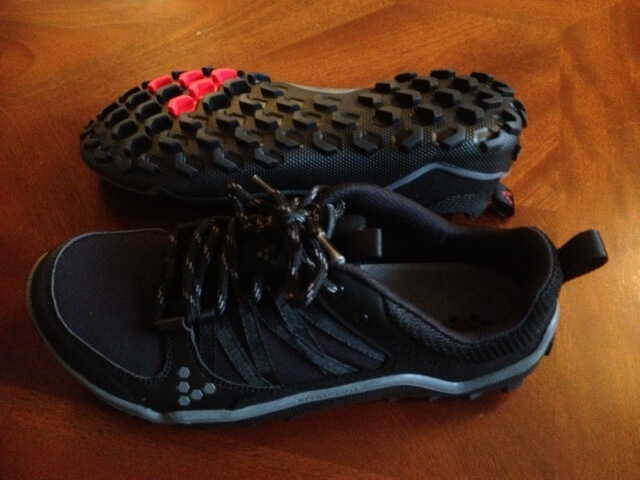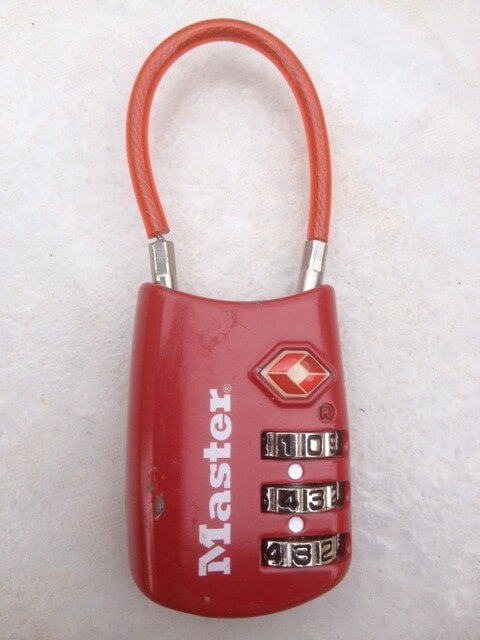
Peru is one of the most popular tourist destinations in South America, and has world famous attractions such as Machu Picchu in Aguas Calientes, the Inca Trail, starting in Cusco and the Nazca Lines in the Nazca Desert in Southern Peru. Peru has activities for all travel styles. Travelers can visit cultural museums, hike the Inca Trail and visit world famous monuments. This Peru packing list contains a list of recommended items and travel gear to take on your trip to Lima, Peru and Cusco, Peru.
Read more: Top 10 Things To Do In Peru
Climate In Peru:
Peru’s climate can greatly affect what you should pack when visiting. Since Peru is primarily cool and temperate, you should mainly pack layers and warm clothes and also clothes for warmer weathers. Lima is the capital city of Peru and has a low elevation unlike many other parts of Peru. Lima is a coastal area and is also near some beaches. Peru is in the southern hemisphere and in the summer (1 December to 28 February), Lima, Peru can reach temperatures in the 80s°F.
Average Temperature in Lima, Peru:

Photo Credit: www.worldweatheronline.com
Average Temperature in Cusco, Peru:
Due to it’s elevation, Cusco’s climate is cool and remains steady throughout the year. For more information on coping with Cusco’s elevation, check out my 5 Tips for Adjusting to High Altitude.
Cusco’s temperature ranges between 71°F to 34°F, so it is important to pack layers and other warm clothes.

It rains occasionally in Peru, primarily in the summer months. You would be best off bringing a rain coat or an umbrella when traveling to Lima, Peru and Cusco, Peru.
Backpacks/Luggage:

Depending on your style of travel, you may want to bring either a suitcase or a backpack. I happened to pack relatively light, so I only needed a backpack. If you are looking for a suitcase to bring on your trip to Peru, you may want to check out the eBags EXO 2.0 Hardside Spinner, or the Samsonite LIFT Spinner.
Kelty Redwing 50 – The Redwing 50 was the primary backpack that I used while traveling in Peru. The Redwing 50 is a 50-liter capacity internal frame travel backpack. Unlike most other travel backpacks, the Redwing isn’t obnoxiously large and doesn’t make you look too much like a backpacker. Also, the neutral colors of the backpack don’t attract much attention. The pack barely meets airline carry on requirements, so I had to be careful not to over pack it. You can read my full Kelty Redwing 50 review here.
You might also want to check out the Kelty Flyway and the Osprey Talon series, which are both travel backpacks that I’ve heard other travelers rave about.

REI Flash 18 – In addition to my Kelty Redwing 50, I also brought the REI Flash 18, which is an 18-liter daypack. Whenever I left our hotel to explore Peru for the day, I would take my 18-liter pack with some essentials such as a water bottle, camera, cash and snacks. My primary backpack would be left at the apartment or hotel. When not in use, I would pack the Flash 18 into my Redwing 50. The pack weighs less than a pound and can be rolled up to take up less space, which makes it a good choice for being a secondary backpack. See my review of the Flash 18 here.
Clothing:

This a list of clothing that I packed when for visiting Peru for a month:
*Note: Depending on your needs and activities, you may need to bring more or less clothes.
1 Pair of Jeans – Jeans are perfect to wear in Peru since they are warm and versatile. Jeans can be heavy and take up lots of space in your suitcase, but their versatility and durability makes up for the extra weight. Wear your jeans when flying so you don’t have to carry extra weight.
1 Pair of Convertible Pants – Pants that convert into shorts are especially useful in Peru because they can be used for any occasion, such as hiking in the Inca Trail, or just sight seeing. Since the temperature in Peru can change dramatically in a day, pants that can change into shorts are helpful. Some convertible pants such as the prAna Stretch Zion Convertible Pants are water resistant and UV protective. Convertible pants are also much easier to hand wash than jeans.
2 Pair of Athletic Shorts/Shorts
3 T-Shirts – I prefer for my travel t-shirts to be made of materials like polyester rather than cotton. Polyester is usually lighter, easier to hand wash and faster drying. I’ve noticed that it’s hard to find drying machines in South America; so quick drying shirts have an upper hand. I would highly recommend are the Patagonia Capilene 1 Silkweight T-Shirt, which is quick drying, UV protective and odor resistant. The odor resistance was really helpful while trekking in Peru.
1 Polo Shirt- In case you need to wear something a bit nicer than a t-shirt.
2 Long Sleeve Shirts – I brought two long sleeve shirts, one being the Columbia Baselayer Midweight Mock Neck Long Sleeve, which I wore while hiking.
1 Rain Jacket – To protect yourself from the rain, you may want to bring a rain jacket. Waterproof jackets with waterproof and breathable technologies such as GORE-TEX, are fit for serious outdoors enthusiasts and can handle the most extreme conditions. They can be expensive, but worth are the cost if you wear them often. I own the Montane Minimus Smock, which is a waterproof and breathable jacket which weighs only 5 ounces,
If you aren’t planning on using your rain jacket often, or if you are visiting Peru during the dry season, you can just bring a poncho.
1 Jacket – It can get cold at night in Cusco, so you should definitely bring a jacket with you. I wore the First Ascent MicroTherm Down Hoodie, which is extremely lightweight and moderately warm.
Undergarments – amount depends on the length of your trip, though I wouldn’t bring more than 7 pairs of underwear.
4 Pairs of Socks – socks are easy to hand wash, so you probably won’t need to bring too many. I brought 3 pairs of below ankle socks, and 1 pair of long warm merino wool socks for hiking. You can read my review of my merino wool socks here.
You can always purchase clothes while in Peru, however American brand clothing is usually much more expensive in Peru than it is in the US. Basic t-shirts can be easily purchased in the many stores in Lima and Cusco. If you need technical hiking gear for trekking the Inca Trail, you can also rent gear such as sleeping bags, trekking poles and hiking boots in Cusco.
Footwear:

1 Pair of Sneakers – I wore a pair of Vivobarefoot trail running shoes as my ‘go-to’ pair of shoes in Peru. They are lightweight, comfortable and have good traction.
1 Pair of Sandals – I also brought a pair of Adidas Superstar Slides. They are really comfortable and great for wearing casually.
Find out everything you need to know about Peru – get our guidebook…
It’s only $2.99 – and free if you’re a Prime Member.
Toiletries and Hygiene:
There are several places in Peru to purchase toiletries, so it isn’t completely necessary to bring all of your toiletries from home.
Travel Tip: Most toilets in Peru can clog if you flush toilet paper down in them.
Soap
Shampoo
Toothbrush
Toothpaste
Sunscreen
Etc. – See the general packing list for a full list of toiletries you may or may not need to bring.
Electronics:

Peru uses 220-volt outlets, while the voltage is 120 in the US. Some chargers, such as laptop chargers support 220-volt outlets, however you should purchase a voltage converter to prevent your chargers from burning or frying. Also, the charger prongs of American electronics won’t fit in the Peruvian outlets. This is a voltage converter review that I wrote for the voltage converter that I used while in South America.
Though Peru isn’t an extremely dangerous place, so be sure to be watchful over your electronics and valuables. Just in case, I tried to use my laptop and other electronics only in areas such as in our hotel or other areas which I knew were safe.
iPhone and iPhone Charger
MacBook Air and Charger – While in Peru, I still needed to do some work, meaning I had to use my computer pretty often. Thankfully, my 13-inch MacBook air wasn’t too heavy or bulky. The only downside to the MacBook Air is that it can be a bit flashy due to its sliver body. Internet connection in Peru was not an issue as it wasn’t hard to find places with internet and the speeds were fine, however internet in the US is a bit faster.
External Battery – To keep my electronics powered up on the go, I brought the Anker External Battery, which can recharge an iPhone 4-5 times and an iPad 2 once.
Flashlight – just in case there is an outage, or in an emergency.
Voltage Converter
Hard Drive – for backing up images.
Other:

Passport
Money
Money Belt – Money belts are extremely helpful when traveling around Peru because you won’t need to fear pickpockets. Money belts are great for keeping large denomination bills just in case. My money belt, the Travelon Money Belt, can hold about 8-12 bills.
Sunglasses – Peru can be really sunny, so you would probably want to bring a pair of sunglasses.
Camera – I’m not a photographer, so my only camera was the one on my phone. If you are serious about taking pictures, you may want to consider taking a DSLR camera.
Lock – Though all of my bags were carry-on, I still opted to lock the primary compartment of my backpack. I used the Master Lock TSA Luggage Lock.
Watch – I took my Timex Ironman Sleek watch.
Some links found in this page are affiliate links, meaning that we get a commission if you decide to make a purchase, at no additional cost to you. We would never endorse a product or service we didn’t actually use and believe in.
Related:
- Things to Do in Peru: 10 Best Attractions in Lima, Cusco and More
- Sandboarding in Peru
- Flight Over The Nazca Lines, Peru
- 5 Tips for Adjusting to High Altitude
- General Travel Packing List
Pin this:

Find out everything you need to know about Peru – get our guidebook…
It’s only $2.99 – and free if you’re a Prime Member.

